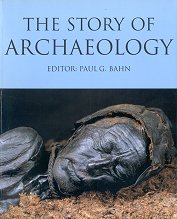Few kinds of evidence are more evocative than human remains –
whether mummified, fossilized, or simply preserved as skulls and skeletons in burial sites the world over.
In cases like Pompeii or the Iceman, bodies captured in the throes of death provide us with a snapshot,
a freeze-frame of a moment in the distant past.
Graves are a planned disposal of the dead that can conjure up the very world our ancestors inhabited,
while the method of burial throws light on belief and ritual.
We can assess the wealth and status of the dead from the jewellery they are wearing,
or the treasures buried with them, and we can guess at their lifestyle from the state of their teeth and bones.
In exceptional circumstances, such as extremely dry, frozen or waterlogged conditions,
the dead can remain virtually intact, and provide a mine of information about
their diet, health and genetic makeup as well as the cause of their death.
Continent by continent, we move from Lucy, the three-million-year-old australopithecine frm Ethiopia,
to Zhoukoudian and Java Man, just half her age.
There are sites of royal sacrifice at the cemetery at Ur, and priestly sacrifice in the Aegean,
while the bodies of children were among those found perfectly preserved in the mountain tops of the Andes,
left out to propitiate the gods.
There is evidence of Early Neolithic massacre at the mass grave of Talheim in Germany,
and of violent deaths among the bog bodies of northern Europe.
In this century, the skeletons found in the pit at Ekaterinburg attest to the tragic fate
of the Romanovs at the hands of the Bolsheviks in 1918.
Exploring fifty of the world's best documented sites of bodies and graves,
we enter the past through fifty different doors, and find a mine of fascinating information.
